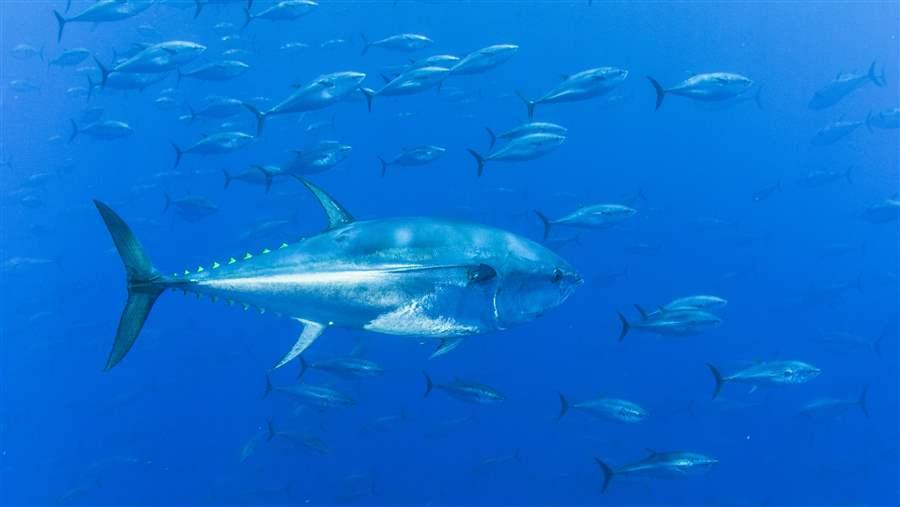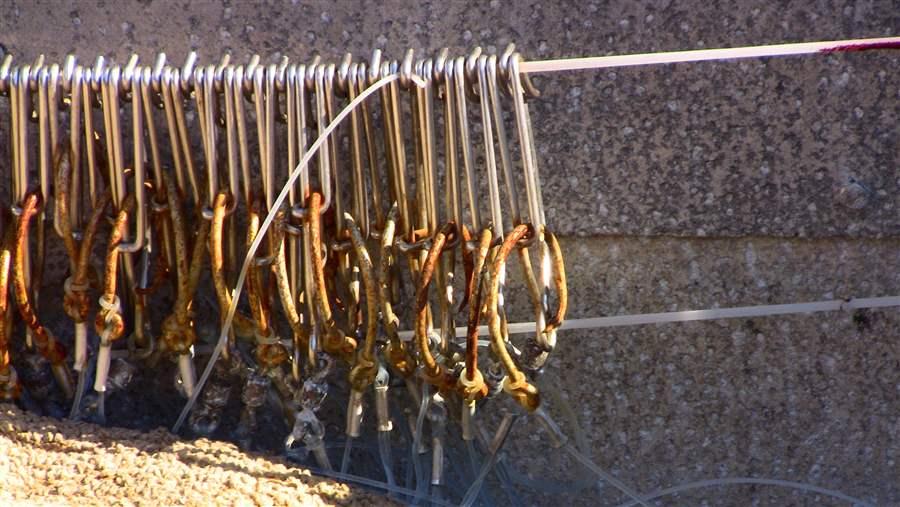U.S. Moves to Reverse Protections for Atlantic Bluefin Tuna
NOAA should keep Gulf of Mexico rules, which have helped minimize bycatch

Atlantic bluefin tuna, sales of which reach $800 million a year, are under threat, with the western stock severely depleted because of unsustainable management.
Manfred BortoliIn a disappointing turn of events for a severely depleted stock, fishery managers have taken an initial step to eliminate proven protections for western Atlantic bluefin tuna in the Gulf of Mexico. The new proposal could abolish conservation-minded requirements governing fishing gear and closure areas during peak spawning periods.
The western Atlantic bluefin is one of the fastest and most commercially valuable fish in the sea. But its population has suffered a severe decline after decades of overfishing and mismanagement. Today, its population is a little more than half of what is was in 1974, when it was already depleted, and experts expect international quotas agreed to last year by the International Commission for the Conservation of Atlantic Tunas (ICCAT) to bring further decline. Even under the best management, the stock would have a difficult time recovering, in part because bluefin are slow to grow and reproduce. When they are fished relentlessly, recovery is nearly impossible.
That threat is particularly severe in the Gulf of Mexico, the only known major spawning area for western bluefin. U.S. fishermen using surface longline fishing gear to target yellowfin tuna and swordfish also indiscriminately catch and kill more than 80 types of other marine life incidentally, including western bluefin. More than half of all bluefin caught on Gulf longlines die before they are brought to the boat. Protecting spawning bluefin in the Gulf is critical to their recovery.
After years of deliberating, the National Oceanic and Atmospheric Administration (NOAA) began to improve protections for spawning bluefin in 2011 by requiring Gulf surface longline fishermen to use thinner, weaker hooks year-round that straighten to release large bluefin before they die of exhaustion on the line. That change has reduced dead discards of bluefin tuna in the Gulf by almost 75 percent.
In 2015, NOAA added comprehensive management measures that included establishing two new Gulf of Mexico gear restricted areas (GRAs) totaling nearly 27,000 square miles in which the use of surface longlines is prohibited during peak bluefin spawning in April and May. Since the GRAs took effect, the average annual number of bluefin hooked on longline gear has declined by 82 percent during closure periods, proving that the measures work.

Click here to view our photomosaic in support of Atlantic Bluefin Tuna.
There’s no reason for NOAA to rescind the much-needed GRAs and weak hook requirement, which have proved more successful than anticipated. In 2016, landings of Gulf fishermen’s prized catch, yellowfin tuna, were 38 percent higher than when the GRAs went into effect. In addition, restoration dollars from the Deepwater Horizon oil spill are supporting Gulf longline vessels in using more selective, alternative fishing gear to help reduce the wasteful incidental catch of bluefin.
With ICCAT struggling to get it right on bluefin, NOAA proved that it can implement smart, U.S.-based measures that protect spawning bluefin and help the population recover. It is premature and ill-advised to roll back spawning protections for Atlantic bluefin. NOAA must stay the course.

Longline hooks such as these are baited and fed into the water, hundreds at a time. All manner of marine life takes the bait, and in the case of the Gulf surface longline fishery for yellowfin tuna and swordfish this led to high levels of bluefin bycatch before NOAA enacted new rules in 2015.
Thomas Wheatley/The Pew Charitable TrustsRachel Hopkins manages The Pew Charitable Trusts’ global tuna work and Thomas Wheatley manages its ocean conservation efforts in the Gulf of Mexico.








